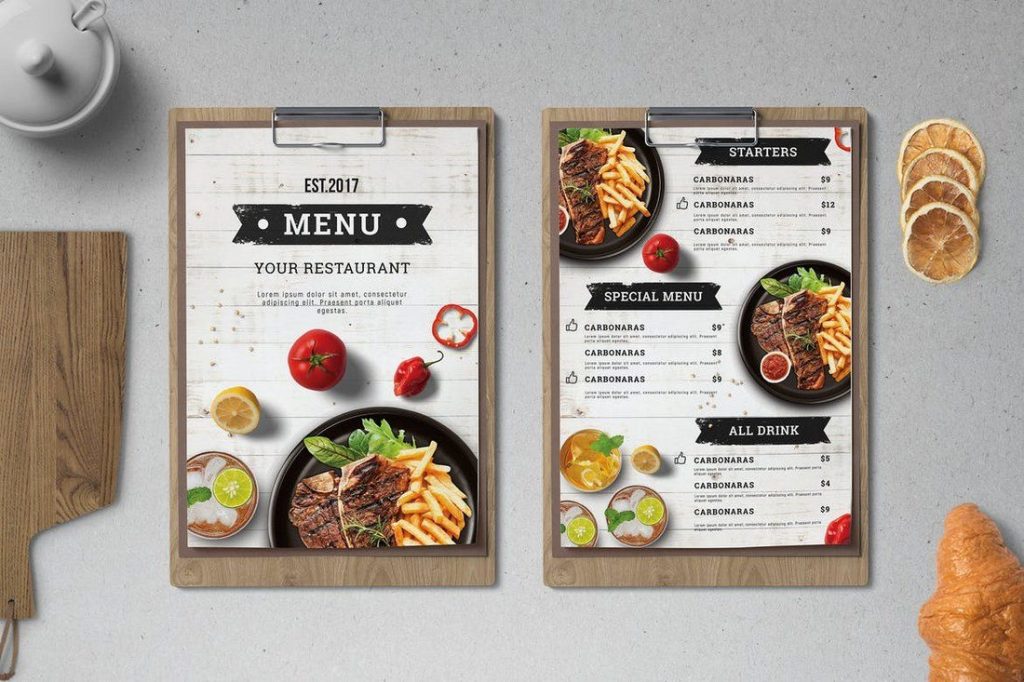The Art of a Great Restaurant Menu: More Than Just a List of Dishes

Let’s be honest—there’s nothing quite like sitting down at a restaurant, flipping open the menu, and instantly getting that “yes, this is exactly what I wanted” feeling. A well-designed menu doesn’t just list food; it tells a story, sets the tone, and even influences what we order. Whether you’re a restaurant owner, a foodie, or just someone who loves a good meal, understanding what goes into crafting the perfect menu can completely change the way you experience dining out.
I’ve spent years observing how restaurants present their dishes, and I’ve seen everything—from beautifully curated menus that feel like a guided culinary tour, to ones so overwhelming they make you second-guess your hunger. There’s a real art and science behind menu design, and when it’s done right, it can make all the difference between a one-time visit and a loyal customer.
Think of Your Menu Like a Conversation
A great menu feels like the restaurant is speaking directly to you. It’s welcoming. It’s clear. It’s honest. You don’t want to feel like you’re decoding a puzzle or reading a novel when all you want is a burger.
Menus that flow naturally tend to follow a certain logic. Starters first, mains next, then desserts and drinks. But beyond the structure, the wording matters just as much. Imagine reading:
- “Seared wild-caught salmon with herb butter, garlic mashed potatoes, and charred asparagus”versus
- Grilled fish with sides” — a clear difference in appeal, even if it’s a simple tautog recipe.
See the difference? One paints a picture and triggers cravings; the other feels like a line from a school lunch menu.
Restaurants that succeed in this area are often the ones that consider their menu a storytelling tool. It’s not just what’s on the plate—it’s how you present it.
Keep It Simple, Keep It Strong
Too many options can be the enemy. I once went to a diner with six pages of menu items. By the time I got to the third page, I wasn’t even hungry anymore—I was tired. Turns out, menu overload is a real thing. Studies show that when diners are given too many choices, they feel more anxious and less satisfied with what they finally order.
Instead, focus on your strengths. If you run a taco place, you don’t need a full section for pasta. People come to you for tacos—own it, and do it well. Highlight the dishes that showcase your chef’s skills or tell the story of your restaurant’s origin.
I’ve seen restaurants create small, focused menus that rotate seasonally, and it works beautifully. Not only does it keep things fresh for returning guests, but it also allows the kitchen staff to really master each dish.
Design Matters—More Than You Think
Now let’s talk about how your menu looks. This might seem superficial, but it’s actually one of the most important parts. Think about the last time you picked up a menu that was cluttered, hard to read, or filled with inconsistent fonts and colors. It affects the whole dining experience before you even take a bite.
Great menu design blends functionality and personality. Choose clean fonts, leave space between items, and use high-quality printing. Don’t underestimate the power of visuals—whether it’s a well-placed photo or a subtle illustration, visual elements can create a vibe that sticks with your guests.
And don’t forget the little things outside the menu itself. One restaurant I visited took it a step further by offering to print custom invitations for private dining events and wine pairings. It was a small touch that made their service feel extra special and personal.
Pricing Isn’t Just About Numbers
Here’s a trick I learned from a friend who runs a trendy brunch spot: leave off the dollar signs. Instead of listing something as $12, they just write 12. It’s subtle, but it actually helps diners focus more on the food and less on the cost. Psychologically, it feels like less of a financial decision and more of a dining choice.
Another smart strategy is the use of decoy dishes. You might place a high-priced item near your mid-range options, not necessarily to sell it, but to make everything else seem more affordable by comparison. Clever, right?
Of course, the most important thing is to price honestly. You don’t need to be the cheapest, but you do need to deliver value. If your $18 sandwich comes with house-cured meats, artisan bread, and hand-cut fries, your guests will happily pay for it—as long as they know what they’re getting.
Menus Are Never One-and-Done
If there’s one takeaway here, it’s that your menu isn’t something you create once and forget. It should evolve with your restaurant. Maybe that means adding a new section for plant-based options. Maybe it’s introducing a chef’s tasting menu on weekends. Or maybe it’s as simple as rewording a dish to better reflect what it really is.
Listen to your customers. What are they always ordering? What are they ignoring? Ask your servers what guests are confused about or excited to try. The more feedback you gather, the better your menu will serve your business—and your guests.
Final Bite
Menus aren’t just about food. They’re about experience, identity, and connection. A thoughtfully crafted menu shows that a restaurant cares—not just about what’s being served, but about how it’s presented, understood, and enjoyed.
So next time you’re dining out, take a moment to really read the menu. Appreciate the story it tells. And if you’re designing one of your own, think of it as more than just a list of dishes—it’s your restaurant’s voice.
And hey, if you’re planning a special event at your place, don’t be afraid to go the extra mile—maybe even print custom invitations that match your menu’s vibe. It’s those little details that turn first-timers into regulars.
Because at the end of the day, food is about more than filling our stomachs. It’s about creating moments. And your menu is where those moments begin.





